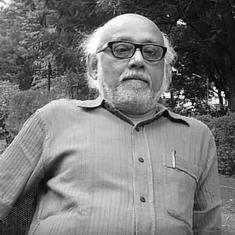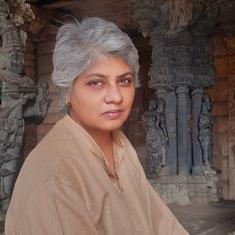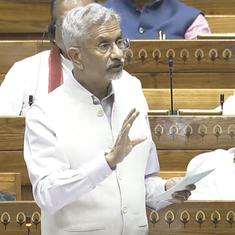In tennis circles, a discussion has been brewing for a while. It mostly centres around whether male players should be playing five setters at Grand Slams. The arguments range from whether the five-set format effects the health of the players to whether there is an audience for it.
But as one watched Sascha Zverev dig deep to beat Karen Khachanov in his third consecutive five-set match, one couldn’t help but think whether we even need that discussion. The three-and-a-half-hour epic ended 4-6, 7-6(4), 2-6, 6-3, 6-3 but was a high quality match all through.
Zverev has been one of the stars of the clay-court season but even he knew that to win a Grand Slam, he needed to raise his level even higher. To last two weeks, to play five setters, to beat the best in the business, requires a different level of preparation and mental toughness. In a nutshell, that is what makes Roger Federer, Rafael Nadal and Novak Djokovic so special.
They knew how and when to raise their levels. The three consecutive five setters might have taken too much out of Zverev this year but it represents a great learning and that is how it should be.
On the face of it, Zverev’s level in terms of gameplay isn’t very different to his previous early Slam exits. But he’s keeping himself in matches through sheer willpower and physically he is in great shape. This is a great sign of maturity and it shows the belief he now has in his ability.
Some might argue that a second seed shouldn’t be struggling in the early rounds but being able to accumulate these experiences so early in his career is a great plus and will only help Zverev cement his place in the game in the future.
A. Zverev to those who were ready to write his obituary in rounds two, three & four. pic.twitter.com/PYgLvujuwQ
— The Overrule (@theoverrule) June 3, 2018
Keep vs ditch
Famed tennis coach and former pro Brad Gilbert was watching the Zverev-Khachanov match and he sits firmly on the ‘keep the format’ side of the argument.
He tweeted: “This Roland Garros shows exactly why 5 setters are why we play them and anyone that thinks different has no understanding of why we play them best of 5 in slams, absolutely what separates them from regular events and this will never change.”
Pam Shriver, one of the greatest doubles specialists in the game and a broadcaster, feels the format needs to go because it simply doesn’t have an audience: “Can someone explain how future fans of tennis in today’s fast paced world will settle in and watch all of a 5 set match? Fans might tune in for a 5th set or end of a 5th set. Why would a 12 yr old watch a 5 set match? Why would an 18 yr old watch 5 sets? Why would a 28 yr old...?” [sic]
But then again, the flip side to the argument is a simple one. Try and think back to great Grand Slam moments in recent history, how many three setters come to mind?
Rafael Nadal dethroning five-time defending champion Roger Federer at Wimbledon in 2008. Five sets.
Nadal comforting Federer six months later at the 2009 Australian Open. Five sets. Novak Djokovic ripping off his shirt and screaming with primal ecstasy after the 2012 Australian Open final. Five sets. Six hours. Federer’s comeback win against Nadal in the 2017 Australian Open. Five sets.
Our last Thiem-Zverev at #RolandGarros was much more... animal. pic.twitter.com/wKrITLY0zH
— José Morgado (@josemorgado) June 3, 2018
The best matches are five setters. Of course, the best players also produce the best matches. But for Zverev to join those ranks, he needs to rise too. This is a rite of passage.
A best-of-three format (say, Player X vs Player Y) can produce four distinct three-set outcomes: XYX, XYY, YXX and YXY. A five-set match, on the other hand, has 12 possible set outcomes. It changes things in a big way. And sometimes, it is important to allow a player the time to find his true game. Five setters do that.
Zverev’s drive
“I know who I am. It’s not about learning anymore. It’s about trying to find a way and trying to win,” Zverev said. “I’m very happy about being in the quarter-finals here with going the hard way, going the long distance every single time and showing myself, showing everybody that I can play for as long as I need to.”
“I’m not concerned,” he added. “If you’re mentally fatigued, then something is wrong with you. Physically, obviously it’s not easy to play back-to-back-to-back five-set matches. But I will manage it, somehow. I will do everything I can to recover, as I said after the last match. I will make sure to be ready in two days’ time.”
Huge props to Sascha Zverev on reaching his first GS quarterfinal and doing it the hard way. 3 really impressive 5 set wins based around guts & determination. A tip of the hat to Jez Green (fitness trainer) who has been prepping him for this. Massive effort 💪
— Darren Cahill (@darren_cahill) June 3, 2018
The win against Khachanov also allowed Zverev to advance to his first Major quarter-final. It is another big part of his journey to the top. The German 21-year-old is the eighth player in the Open Era to survive three consecutive five-setters in Paris, and the first since Tommy Robredo in 2013.
But it doesn’t get easier for him. He runs into the other in-form clay player, Dominic Thiem next. Two of Nadal’s biggest rivals battling each other might please the Spaniard but to everyone else, this is a cracker of a match.
Thiem, who beat Kei Nishikori to advance, is looking forward to the Zverev match too: “I think that’s the match everybody wished for after the draw.”
They met in the French Open fourth round two years ago, with Thiem winning in four. But given what we have seen from the young German so far, this match just might be different.










